Hello Everyone,
I'm a beginner for nRF52 and my aim is to learn and develop system on nRF52. I have bought nRF52 development board and installed Keil MDK on my system.
First Goal:
- To setup Keil MDK.
- To test and debug example codes ( starting LED blinky)
I have followed below link for setting up Keil MDK: devzone.nordicsemi.com/.../
Example which I'm trying : .....examples\ble_peripheral\ble_app_uart\pca10040\s132\arm5_no_packs
- I have updated all the required Software pack as well.
- I have complied the code ( Rebuild ), and its shows 0 errors, 0 warnings.
Where I'm stuck:
- After complying the code, I tried Download option. There is no errors such displayed but I cant see the code working on the development board( i.e blinking of LED1)
- I think I have not setup the Target files properly. I'm attaching the screenshot of my target setup.
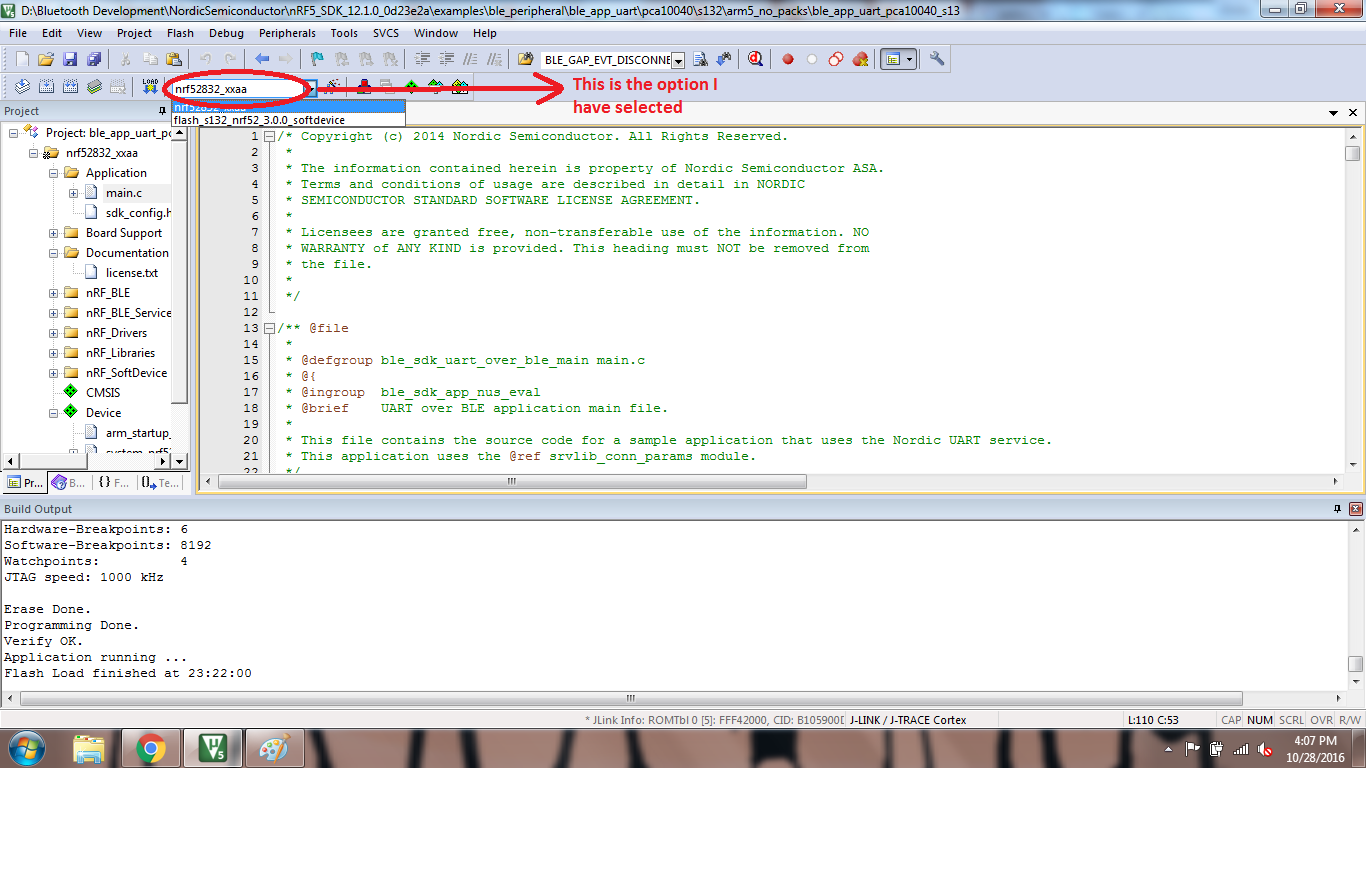

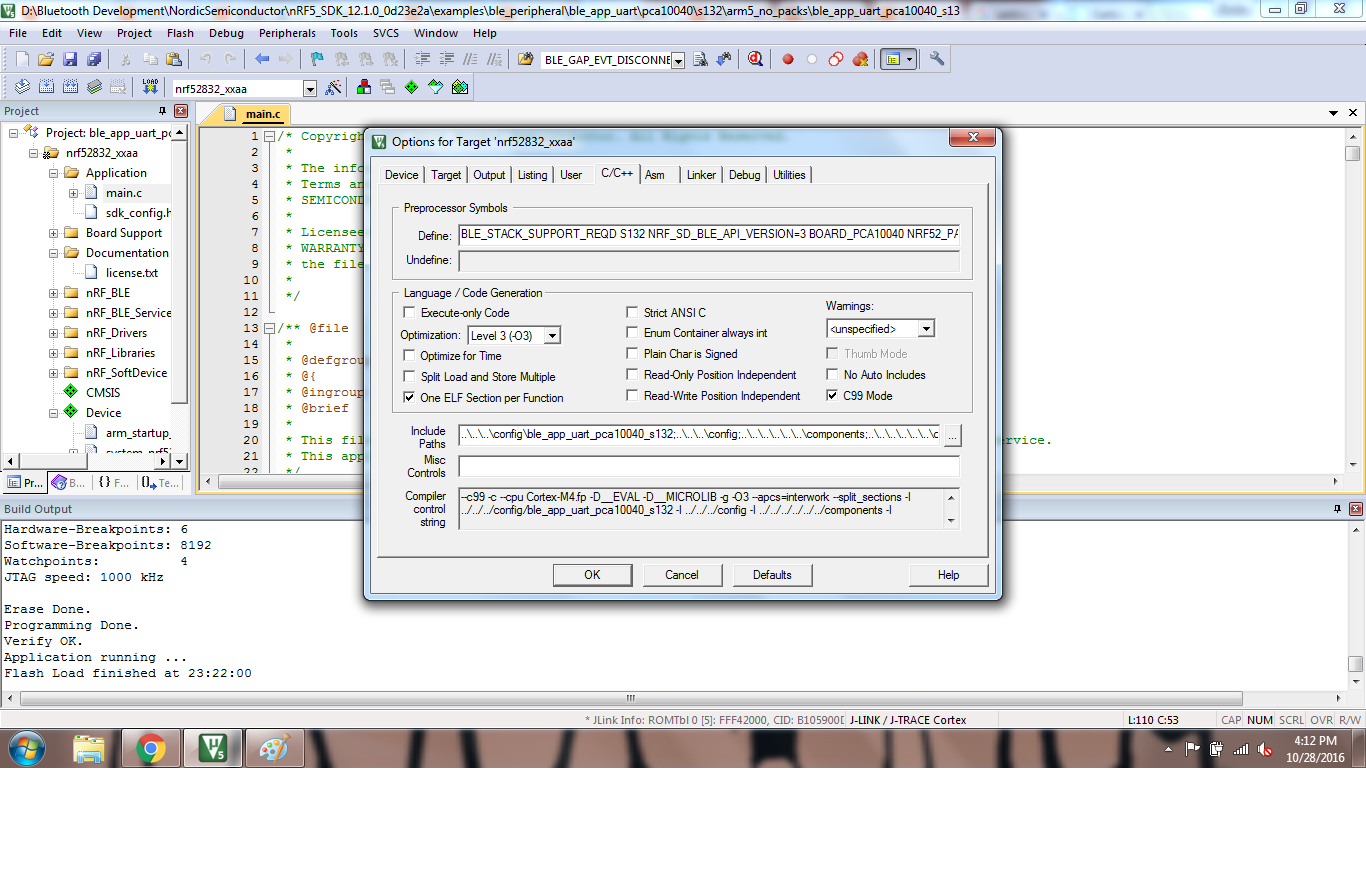
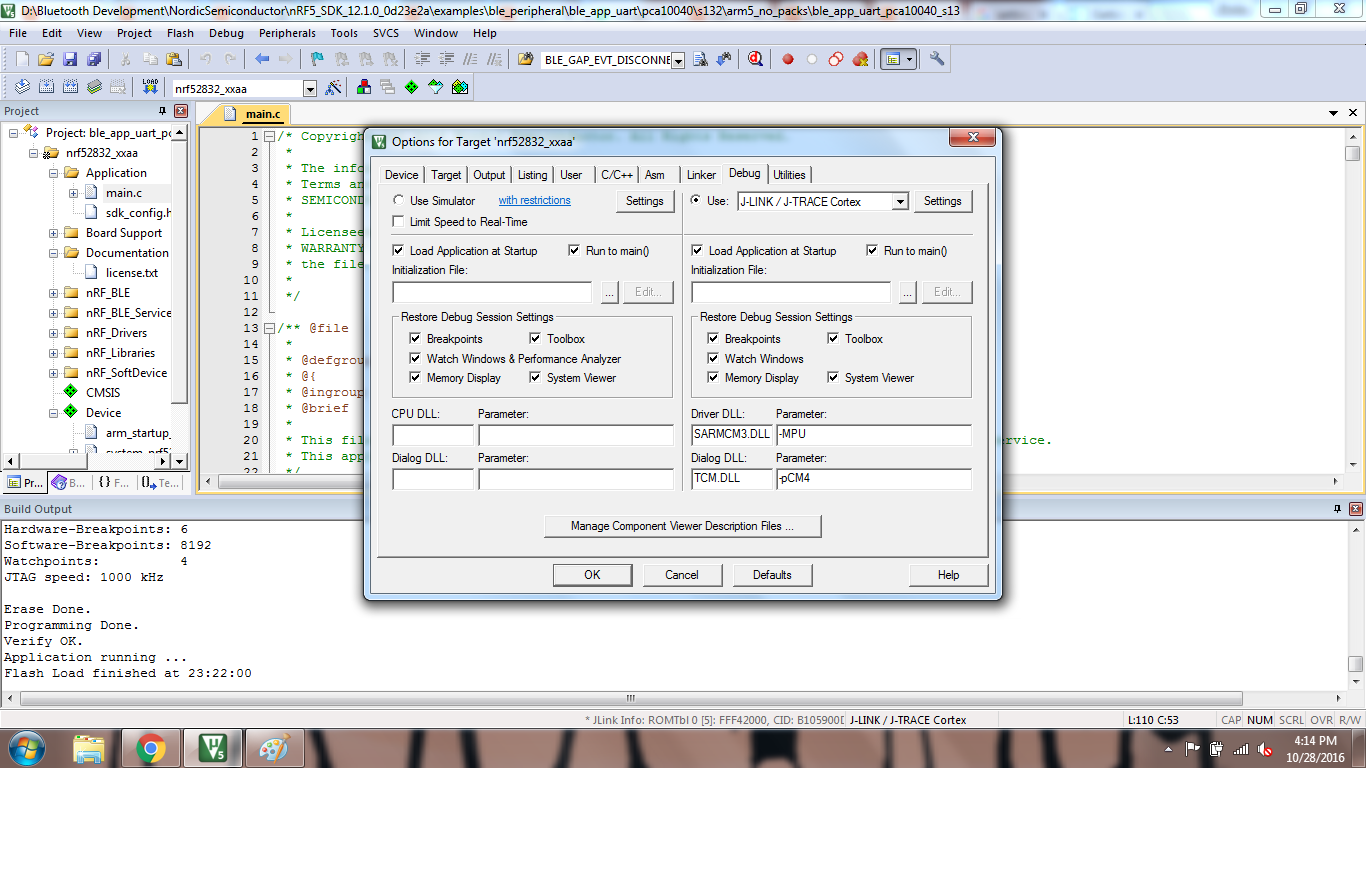
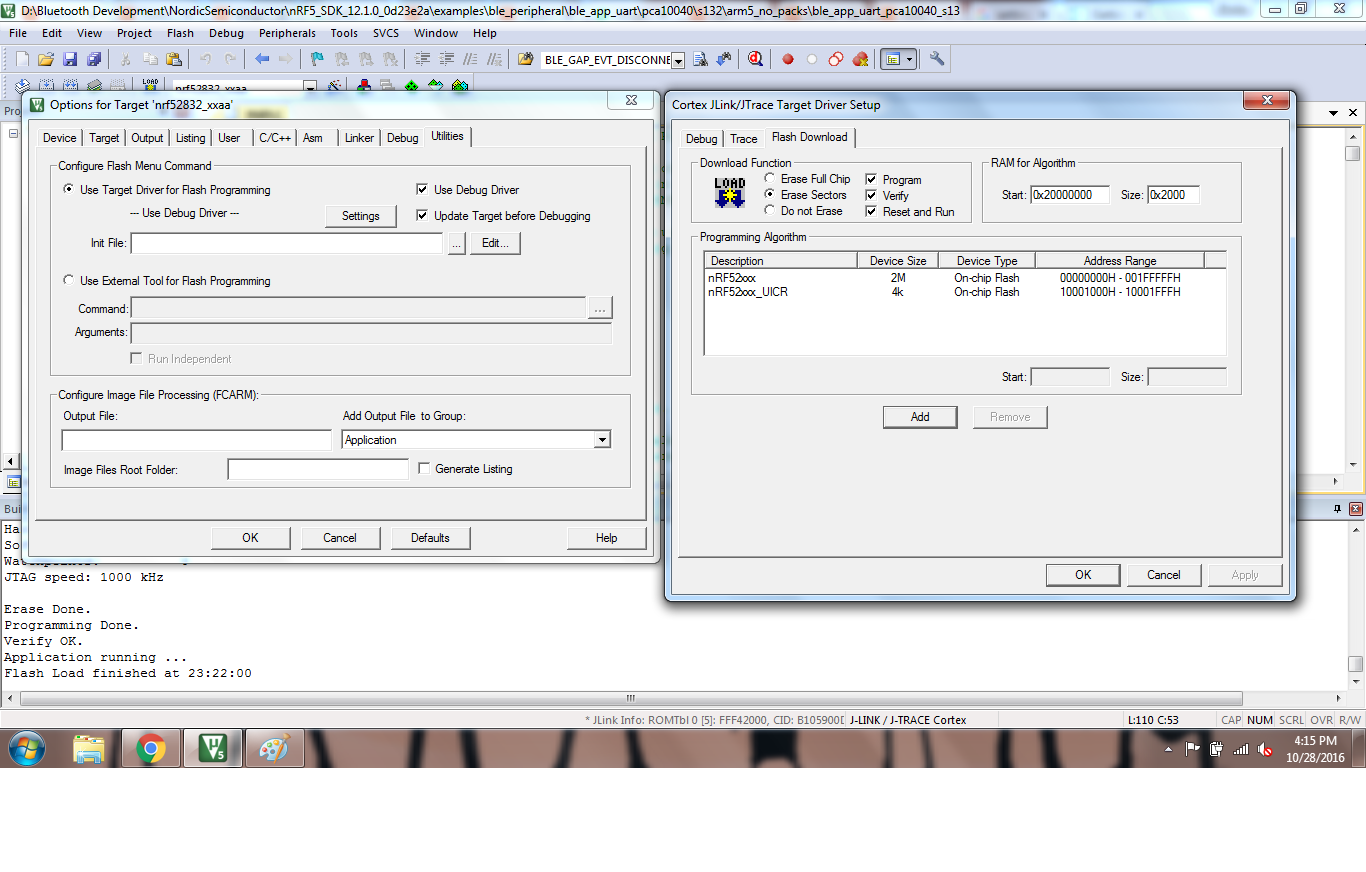
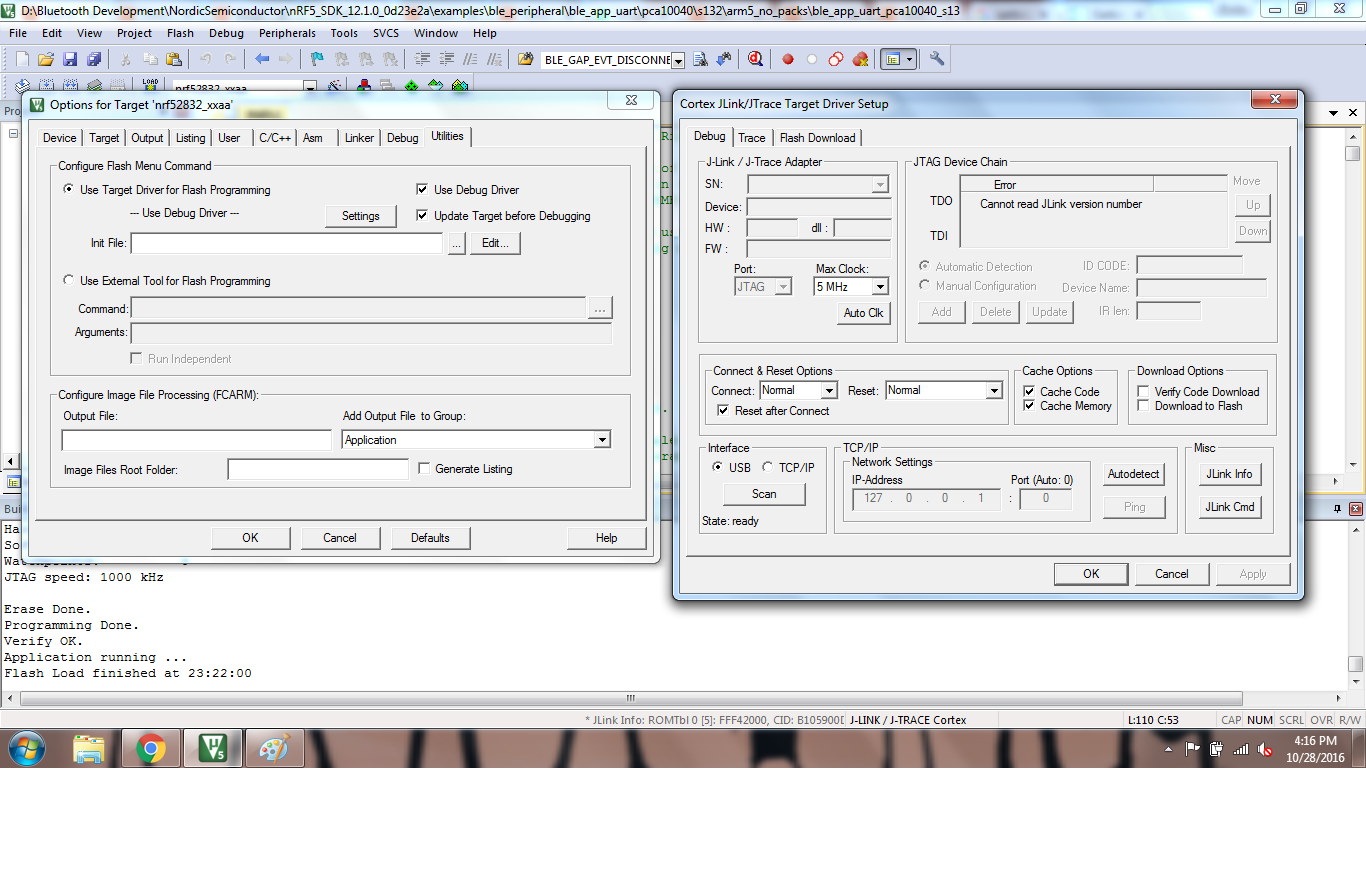
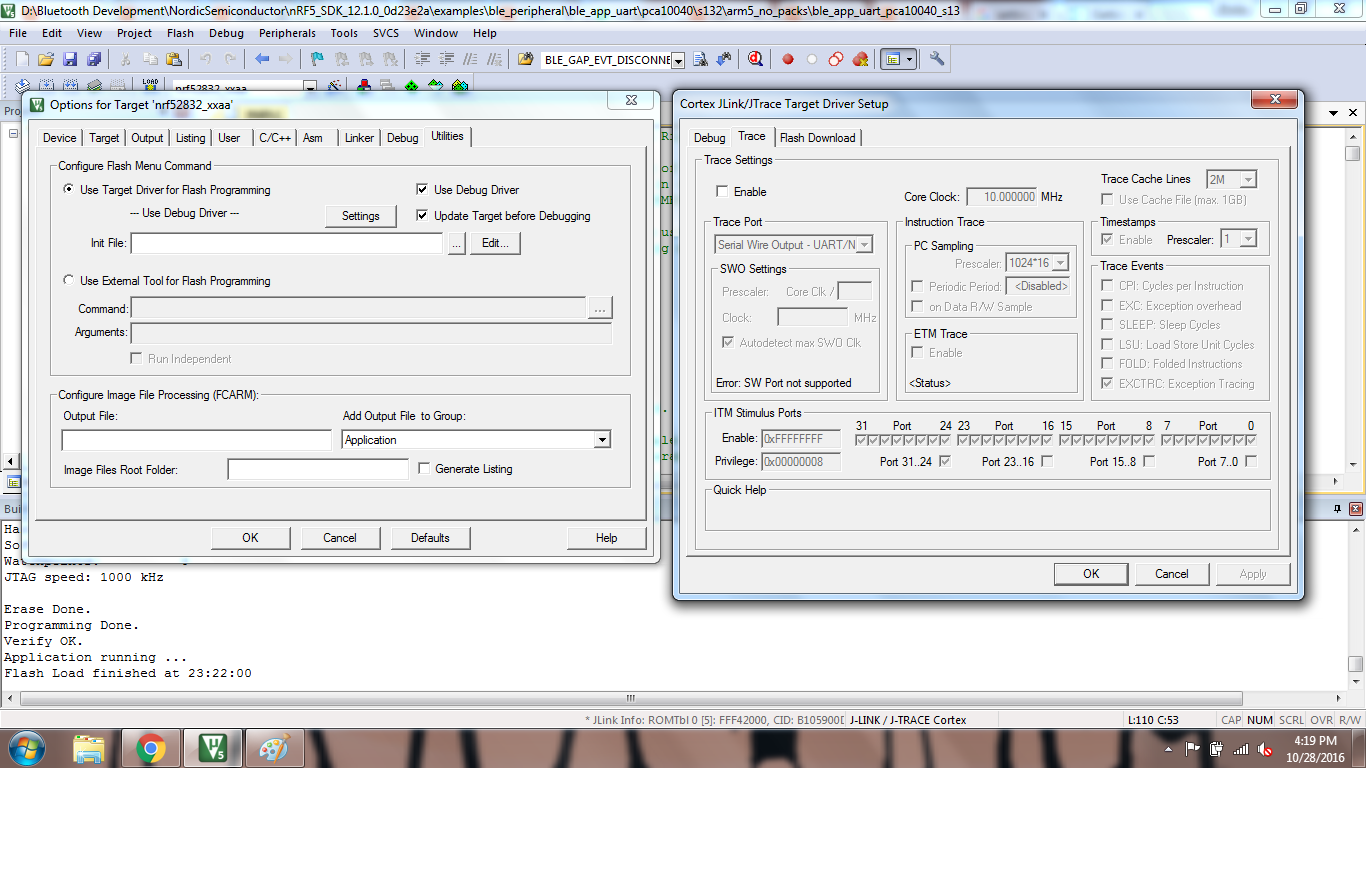
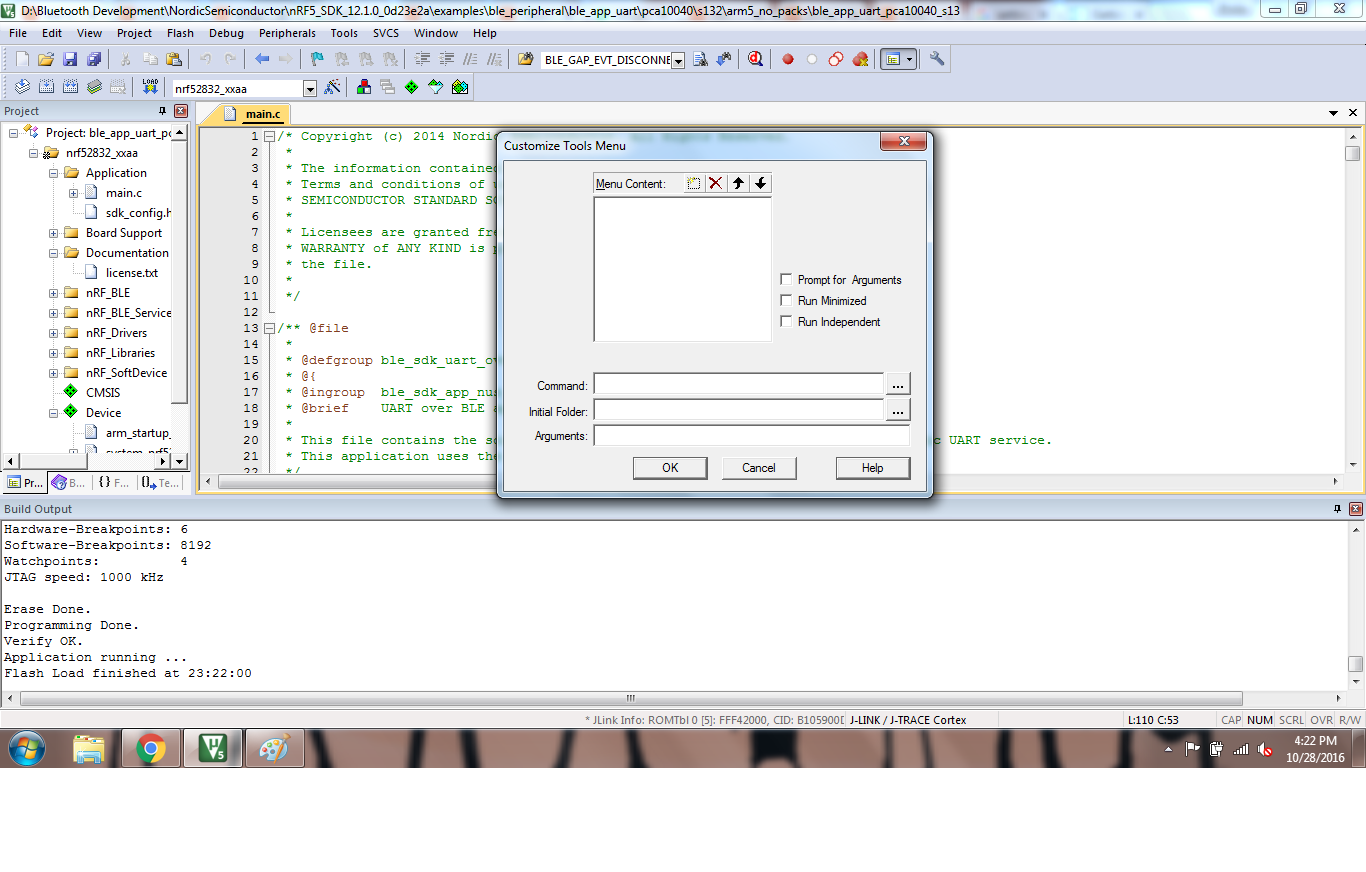
These are the setting in Keil MDK.
Even after loading the code, the default code is running which dimming of LEDx.
Please help me to understand the issue here.
Thanks & Regards Santu


